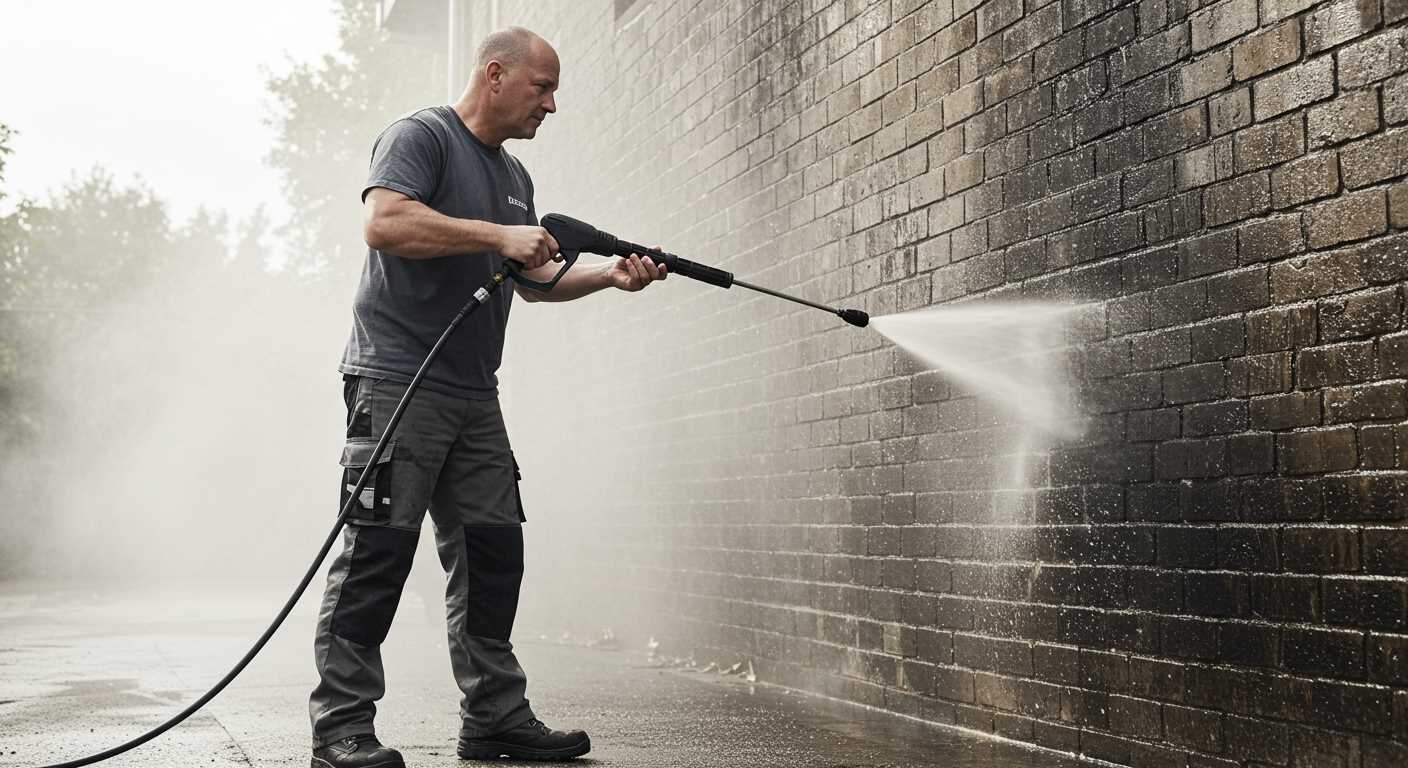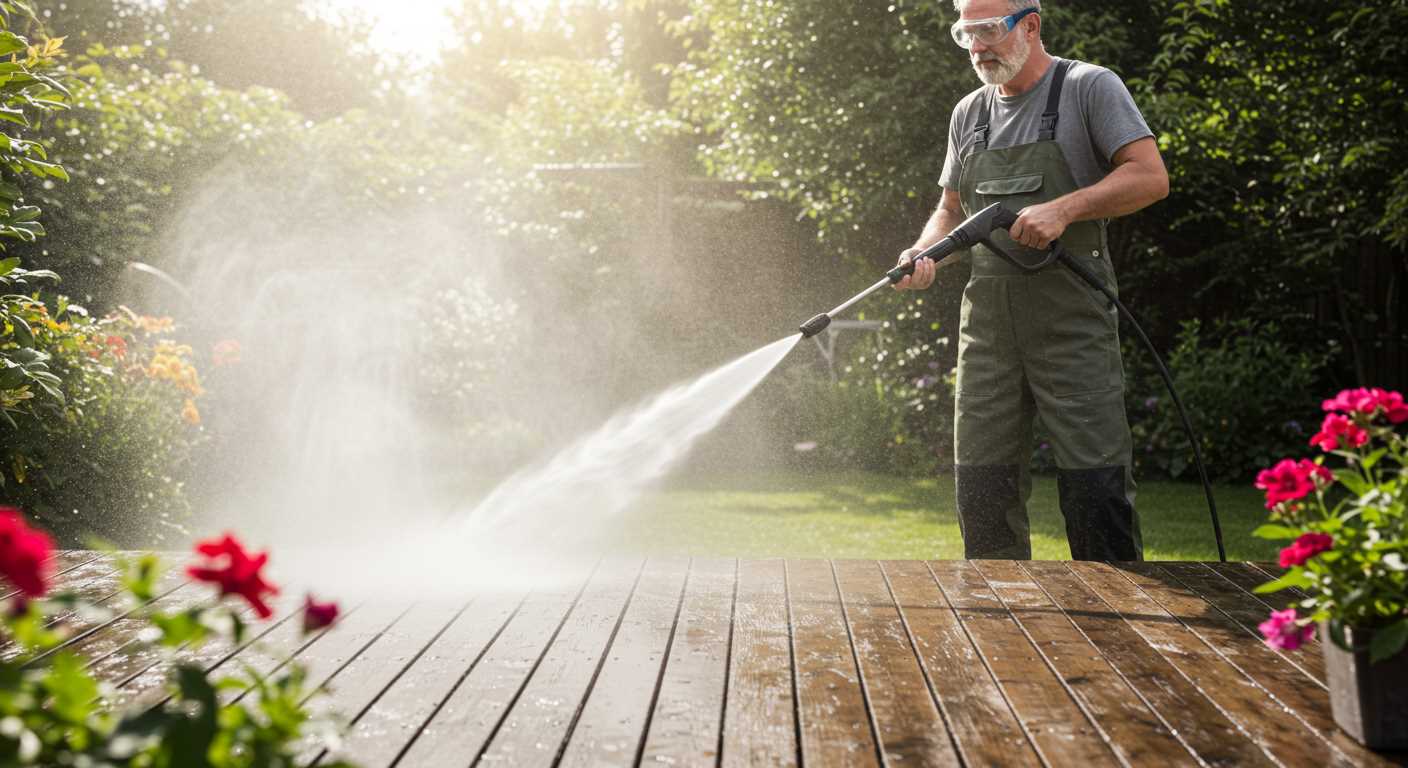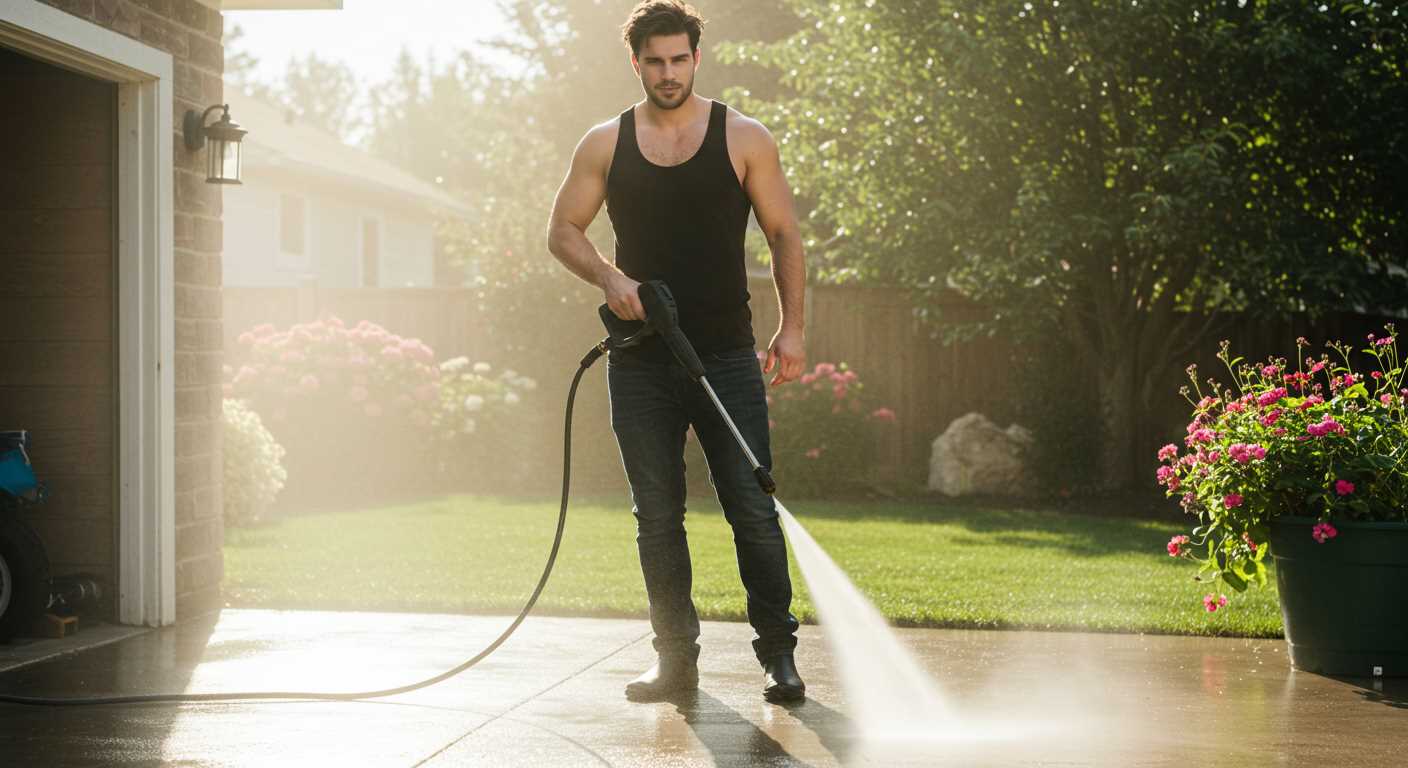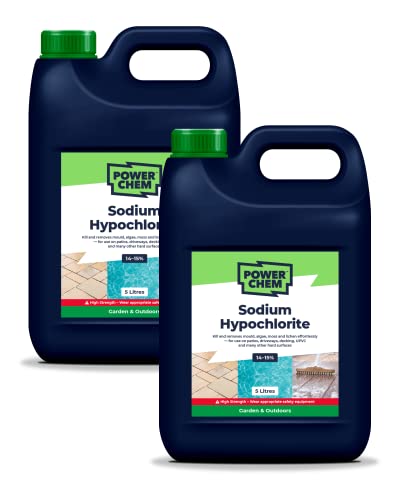

Adding chlorine to your cleaning tool is not advisable. While it might seem like a quick solution for tackling tough stains or mould, the harsh chemical can cause damage to internal components and seals, leading to costly repairs or replacements.
Firstly, many manufacturers explicitly warn against using bleach or similar substances in their equipment. The corrosive nature of chlorine can compromise the integrity of hoses, fittings, and other vital parts. This not only reduces the lifespan of your device but also voids any warranties.
For effective cleaning, opt for products designed specifically for these types of devices. Detergents formulated for pressure cleaning tasks are safe and will not harm your equipment, ensuring optimal performance while achieving impressive results.
Understanding the Chemistry of Chlorine and Its Effects

Chlorine is a powerful disinfectant, often employed in cleaning solutions for its ability to kill bacteria, viruses, and other pathogens. However, its reaction with surfaces and materials should be considered carefully before application. Chlorine releases hypochlorous acid when mixed with water, which effectively sanitises but can also lead to corrosion on certain materials.
Reactivity and Safety Precautions
When introducing chlorine into cleaning practices, it’s critical to understand its reactivity. This compound can degrade plastics and rubber components found in certain cleaning devices, leading to premature wear or failure. Always dilute chlorine with water according to manufacturer guidelines and ensure adequate ventilation to avoid inhalation of harmful fumes.
Impact on Surfaces
Using chlorine-based solutions on painted or delicate surfaces can result in fading or peeling. Testing on a small, inconspicuous area is advisable before full application. Given its strong oxidising properties, a thorough rinse with water post-application is necessary to neutralise any leftover product, preserving the integrity of the surfaces being cleaned.
Compatibility of Chlorine with Pressure Washer Components
Before incorporating chlorine solutions into your cleaning regimen, ensure compatibility with the various parts of your equipment. Chlorine is a strong oxidising agent, and specific materials may corrode or deteriorate upon contact.
Key Component Materials

| Component | Compatibility |
|---|---|
| Hoses | Typically constructed of rubber or PVC; chlorine can cause degradation over time. Opt for hoses specifically rated for chemical resistance. |
| Seals and Gaskets | Many are made from rubber or plastic; prolonged exposure to chlorine can lead to brittleness and leaks. Consider replacing with chlor-resistant materials. |
| Pumps | Most pumps are not designed to handle corrosive chemicals and may suffer from reduced lifespan and efficiency. Use only if manufacturer specifications allow. |
| Nozzles | Brass or stainless steel nozzles may resist corrosion better than plastic. Always check for compatibility before adding any harsh chemicals. |
| Spray Wand | Check the wand material; plastic options may degrade faster. Metal wands generally offer better durability but verify chemical resistance first. |
Consult the manufacturer’s guidelines for compatibility information regarding specific models. If in doubt, consider utilising a dedicated surface cleaner or a different cleaning method to avoid expensive repairs and ensure safety.
Proper Dilution Ratios for Chlorine Solutions
The appropriate dilution ratio for bleach solutions varies based on the application. For general surface cleaning, a mixture of 1 part bleach to 10 parts water is ideal. This ensures effective disinfection without damaging surfaces or equipment components. For areas requiring stronger treatment, such as mould or mildew, a 1:5 ratio may be employed, but caution is necessary due to potential damage to softer surfaces.
Application Specific Dilutions

For sanitising and disinfecting, I recommend a 1:100 dilution, which effectively eliminates pathogens without compromising the integrity of cleaning apparatus. High-pressure settings may necessitate further dilution, often around 1:200 to prevent residue build-up in hoses and fittings.
Safety Considerations and Best Practices
Always wear personal protective equipment, including gloves and goggles, while mixing and applying bleach solutions. Prepare the solution fresh before use to maximise potency, and for safety, ensure the area is well-ventilated. Proper storage of concentrated solutions is equally vital, keeping them in cool, dark places and securely closed to maintain efficacy.
Safety Precautions When Utilizing Chlorine Solutions in Pressure Cleaning Equipment
.jpg)
Always wear appropriate personal protective equipment (PPE) when handling bleach mixtures. This should include gloves, goggles, and a mask to prevent inhalation or skin contact.
Before dilution, ensure the workspace is well-ventilated to mitigate any harmful vapours. In case of any spills, have an absorbent material ready to neutralize any excess solution quickly.
Follow these guidelines for safe handling:
- Store bleach away from heat sources or direct sunlight to prevent decomposition.
- Never mix bleach with ammonia or other cleaners, as this can produce dangerous gases.
- Regularly inspect hoses and nozzles for signs of wear, as aggressive chemicals can deteriorate components.
Ensure that the surface being treated is compatible with chlorine solutions. Test a small area first to check for any adverse reactions, such as discolouration or damage.
After cleaning, thoroughly rinse the surface to remove any residual solution. This prevents potential damage to plants, pets, or nearby surfaces.
In case of accidental exposure, flush the affected area with plenty of water and seek medical attention if irritation persists. Keep emergency contact information readily available.
By adhering to these safety measures, risks associated with using bleach in cleaning devices will be minimized, leading to more effective usage and safer environments.
Recommended Cleaning Applications for Chlorine Use
For effective mildew and mould removal on outdoor surfaces, consider employing chlorine solutions. Aim for wooden decks, patios, and any area where moisture accumulation promotes fungal growth. Diluted formulations work best to tackle stubborn stains without damaging the substrate.
Another practical application involves sanitising non-porous surfaces such as concrete driveways and paths. A mixture can effectively eliminate algae and bacteria, ensuring both cleanliness and safety, particularly in high-traffic zones.
Restoration of tiles and grout in bathrooms or kitchens also benefits from chlorine treatments, as they obliterate persistent discolouration and keep spaces hygienic. Make sure to follow the correct dilution ratios to prevent surface damage while achieving remarkable results.
Controlled Environment Usage
Utilising chlorine-based solutions in controlled settings, like public pools or recreational areas, provides an excellent means to disinfect these shared facilities. Regular treatment contributes to a safe and pleasant environment for users.
Automotive Cleaning

Engaging in automotive cleaning allows for the removal of grease and grime from car exteriors. A careful application of a chlorine mix can assist in restoring the lustre of finishes. Avoid contact with sensitive parts to ensure optimal vehicle maintenance.
Alternatives to Chlorine for Pressure Washing
Consider using oxygen bleach, a non-toxic alternative that effectively removes stains without harming surfaces or the environment. It’s safe on various materials, including wood and fabric, making it ideal for decks or outdoor furniture.
Another option is sodium percarbonate, which acts as a powerful stain remover. When mixed with water, it releases hydrogen peroxide, targeting organic matter effectively. This compound works well on mildew and dirt without posing risks to your equipment.
For tougher grime, try citric acid or vinegar solutions. Both are versatile cleaning agents that can break down mineral deposits and combat mould. Just ensure proper dilution to protect delicate surfaces.
The use of enzymatic cleaners is also beneficial. These solutions harness natural enzymes to digest dirt and stains, proving particularly effective for grease and oil. They are biodegradable, posing minimal environmental impact.
Evaluate commercial cleaning products designed for specific challenges, such as mildew, grease, or hard water stains. These products often contain advanced formulations that enhance cleaning efficiency while offering surface protection.
Always ensure compatibility with your equipment by reading the labels and following manufacturer instructions. Conducting a small patch test on inconspicuous areas can prevent potential damage. Experiment with these alternatives to find the best solution that meets your cleaning needs while safeguarding your tools and surroundings.







